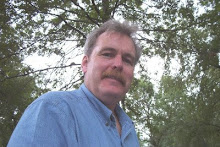When I hear the words, “radiation leak” or “radiation in the water supply”, it sends shivers up my spine. Misspeaking like this causes me to question everything I read in that paper or hear on that newscast. Radiation is an effect, not a substance. The substance that emits radiation is a radioactive material and that can be contained in emissions (or leaks) from a nuclear facility.
Why does no one ever correct this misnomer? I expect that newspapers or newscasts rely heavily on words, so I would think that they would try to use them correctly. I guess I would be wrong.
I have spent 38 years working in the nuclear industry and have tried to explain to my family and friends and neighbors what I do and how the plant works and what the many myths surrounding this industry are. Most people’s eyes glaze over when I start telling them why the plant can’t blow up like an atomic bomb, or what the effects of radiation on the human body are. That is one of the biggest myths; we don’t know what radiation does to the human body. If you believe the myth, we can still have giant ants in the desert and fire-breathing dinosaurs under the ocean.
The truth is not as compelling as the myth. Radiation causes damage on the atomic and molecular level. Radiation causes ionization of the material that it interacts with. This ionization can directly break apart molecular bonds and cause direct damage to molecules within the cells (e.g., DNA or RNA or other biological protein strands). It can also ionize individual atoms or break molecular bonds to create free radicals. These can chemically interact with in the cell structure to damage or kill the cell.
When the individual damage is combined with other damage in very high doses, it can cause biological systems to break down. This only happens in very high doses. This is called radiation syndrome or radiation sickness. It starts if you were to receive twenty times the annual limit for radiation workers in a short time.
What we can measure in lower doses is an increased risk of cancer. This is problematic because there is already such a high risk of cancer; roughly one in four people will get cancer if they received no extra dose of radiation. So, of a group of ten thousand people, twenty five hundred could reasonably be expected to contract cancer (plus or minus the statistical variance). If each person in that ten thousand person group were to receive one fifth of the annual limit for radiation workers, we could expect to see six extra occurrences of cancer (unfortunately within the statistical variance of ten thousand subjects – so it can’t be identified as being caused by the radiation dose).
This is part of what I do. I’ve worked as a Radiation Protection Technician, a Radiation Protection Instructor, a Radiological Engineer and several other jobs that I did to pay the bills. I never forget that what I do is outside the norm, but it is interesting work. I don’t like it when people that don’t understand it try to tell others what’s going on. As I said – it sends shivers up my spine.
Subscribe to:
Post Comments (Atom)

Very interisting work, I just learned somthing
ReplyDelete